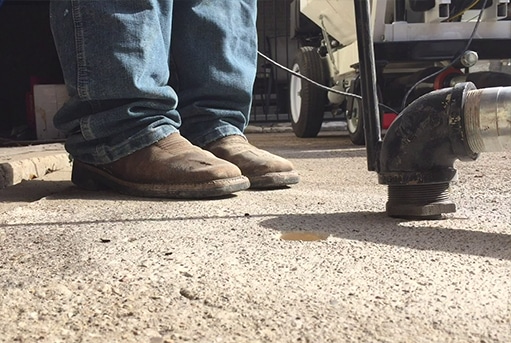Concrete leveling is a commonplace method for repairing a driveway or sidewalk. The procedure may entail one of two techniques: concrete grinding or leveling. What are the differences between concrete grinding and leveling? Each of these methods have their respective advantages, and an evaluation from a professional at Align Foundation Repair will determine which method is appropriate for a residential or commercial job.
Concrete Grinding
Concrete grinding is exactly what its name suggests. A tool is used to grind the concrete surface. This removes the rough outer portion, revealing a smooth surface. Concrete grinding is mainly a cosmetic procedure and is commonly used in areas like home driveways, public sidewalks, and warehouse floors. Concrete grinding is also used when home or business owners wish to install hardwood or tile over the concrete. Concrete grinding in this instance is often a pre-installation requirement to ensure a flat surface.
Other applications for concrete grinding include:
- Restoration of spalled areas
- Restoring surfaces too rough for bare feet
- Removal of old paint, adhesives, and mastics
So, how do you grind material as hard as concrete? Modern grinding equipment include synthetic diamond tools. Depending on the type of concrete, the diamond is sorted according to grit and mesh for producing the desired results.
Leveling
Leveling is also known as mudjacking. The method is employed to raise a concrete that is uneven or settling to the bottom. In the procedure, polyurethane is pumped into the area below the concrete to fill any voids and gaps. In lieu of polyurethane, the process may also include using a slurry mixture of soil, water, and cement.
Regardless of filler type, once the mixture cures and hardens, it raises the concrete so it’s even and flush with the surrounding surface. The process is non-invasive; contrary to popular belief, it does not involve digging up the concrete. The polyurethane or cement mixture filler is injected below the concrete via a drilled hole about one-inch in diameter.
The entire process can be completed in a matter of hours. The hole for pumping the polyurethane is also patched upon completion and completely unnoticeable. Leveling is a common procedure in the Dallas Fort-Worth area due to the porous soil conditions.
We Restore Sinking Concrete
So, concrete grindings vs leveling: which is right for your foundation repair? Call Align Foundation Repair for an inspection. After an initial evaluation, a technician will recommend the best method for your residential or commercial needs. Leveled concrete is integral from both a functional and cosmetic standpoint. No need to debate over which method to use — let a qualified professional from Align Foundation Repair make the determination as part of your free estimate.



